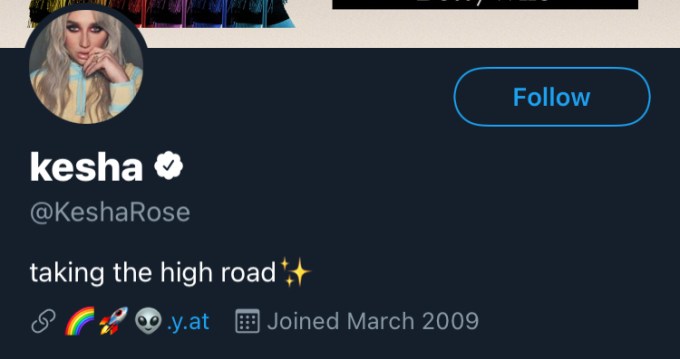“The best thing a startup can do, and I’m seeing it happen more and more, is investing in community early on,” growth marketing expert Max van den Ingh of Unmuted tells us. “When I was leading growth at MisterGreen, we created a community for the first thousand Tesla Model 3 owners in the Netherlands. Everyone wanted to be a part of this founding tribe, learn from each other, get insights and so on.”
“This group turned out to be our most effective marketing tool,” he explains in an interview we published this week. “Word-of-mouth went through the roof. We had all of these people talking about our community at birthday parties, in their office, you name it. This is a great example of investing in marketing you can’t really measure, but which you do strongly believe in.”
Elsewhere in this week’s growth marketing recap, you’ll find TechCrunch’s coverage of growth marketing, and related topics, from the past week. You’ll also find a few recommendations for growth marketers. If you’d like to recommend a great one you’ve worked with, please fill out our survey.
Marketer: Scott Graham
Recommended by: Heather Larrabee, CMO, FORM
Testimonial: “He was referred to us and blew our socks off from his initial analysis. He’s the rare growth adviser expert at strategy and execution. He’s a servant leader, a systems thinker, integrates with the team with empathy and curiosity like he’s an internal teammate, brings a wealth of cutting-edge knowledge, and a stable of incredible partners and resources. He runs with the best and the brightest, but he’s the first one on and the last one off for the day, putting in the time to make things great. He has an uncanny ability to communicate complex concepts and make them accessible for all audiences, and he’s been a foundational game changer for our business and many others.”
Marketer: Ascendant
Recommended by: Robyn Weatherley, Thirdfort Limited
Testimonial: “Beyond their knowledge and experience (which is in abundance!), they have a deep understanding and appreciation for the unique challenges early-stage businesses have. They are in tune with the particular hurdles at various stages of growth and are able to adapt their working style dependent on those. They haven’t just helped us execute vital growth tactics, but they’ve helped us set up the framework to keep executing on those whether we are 5, 50 or 500 people. This is incredibly important as we scale and to demonstrate to future investors. They are also exceptional mentors and are able to offer real-world advice and work flexibly to suit the ever-changing nature of a high-growth early-stage business.”
Marketer: Ferdinand Goetzen
Recommended by: Willem van Roosmalen, Homerun
Testimonial: “Exceptional skills and experience in B2B SaaS, impressive track record, clear communicator, true leader, makes impact from day one, entrepreneur (actually launched his own start up, Reveall).”
Marketer: Adriana Ivascu, HoneyPot Dgtl
Recommended by: Mihaela Petre, Brussels Beer Project
Testimonial: “Besides her solid experience in growth and digital, Adriana has a genuine interest in growing not only the company but its people. She is hands-on in digital transformation but on top of it, she is a coach who inspires and brings the best in teams. We are very happy to have benefited from a long-term strategic growth path and a skill playbook that we can pass on to our whole organization.”
Marketer: Mariska Vroegindeweij, Growth & confetti
Recommended by: Hugo Pereira, EVBox
Testimonial: “[During our time working together] she was very young and bright. She started the Growth Marketing division on her own, built a team of developers, designers, advertisement specialists, product owners to drive conversion on the whole funnel from MQL to Opportunities. It’s hard to find a marketer that combines leadership skills with hardcore skills to drive growth. She was also very data-driven, challenged me a lot on assumptions and proved me wrong a few times by doing experiments and showcasing better ways to convert. And she was bold enough to start her own agency at a young age and doing well. Plus, she’s tons of fun.”
Help TechCrunch find the best growth marketers for startups.
Provide a recommendation in this quick survey and we’ll share the results with everybody.
The MKT1 interview: Growth marketing in 2021, hiring versus outsourcing and more: We hosted a Twitter Spaces with strategic marketing firm MKT1 recently, following a popular interview we published with them a few weeks ago. “The skill sets of growth marketers are in high demand,” co-founder Kathleen Estreich told host Danny Crichton during the event. “They always have been, but it feels pretty acute right now. Given that a lot of the companies are raising money earlier and starting to try and build that traction faster to grow into the valuations, we’re starting to see a huge need.” If you’re curious to see what skills are needed in growth marketing positions right now, take a look at the job board curated by MKT1.
Draft.dev CEO Karl Hughes on the importance of using experts in developer marketing: Anna Heim interviewed Karl Hughes, founder of Daft.dev, which works with a large number of developer tool companies. Hughes’ insights come from personal experience, “I’ve been a software developer, and then most recently was a CTO at a startup in Chicago, so I knew that there were lots of companies trying to reach developers [ … ] and that a lot of them were doing a poor job of it.” In this interview, Hughes addresses the mistakes made when targeting marketing toward developers, the steps that Draft.dev takes to mitigate them and more.
Unmuted founder Max van den Ingh on success beyond the metrics: “At Unmuted, when we start working with a new client, we perform a series of exercises together,” he told us in the interview. “This helps us get a clear picture of where the client is now and where they could be when we’ve optimized marketing. Next, instead of fixed numbers, like a specific amount of new customers in a given period, we focus on growth levers, like month-over-month growth in certain conversion or activation areas. Focusing on growth levers makes our work more actionable.” Read the interview with him for more about Unmuted’s “modern” marketing approach, setting realistic goals and trends seen in growth marketing during the pandemic.
Dan Olsen leads a product-market fit masterclass for the Startup Alley+ cohort: As part of Startup Alley+, TC Disrupt 2021 is offering a VIP experience where Dan Olsen will be holding a product-market fit masterclass. Olsen’s roster of clients includes Google, Facebook and Amazon.
Is there a startup growth marketing expert that you want us to know about? Let us know by filling out our survey.








 ),
), 



